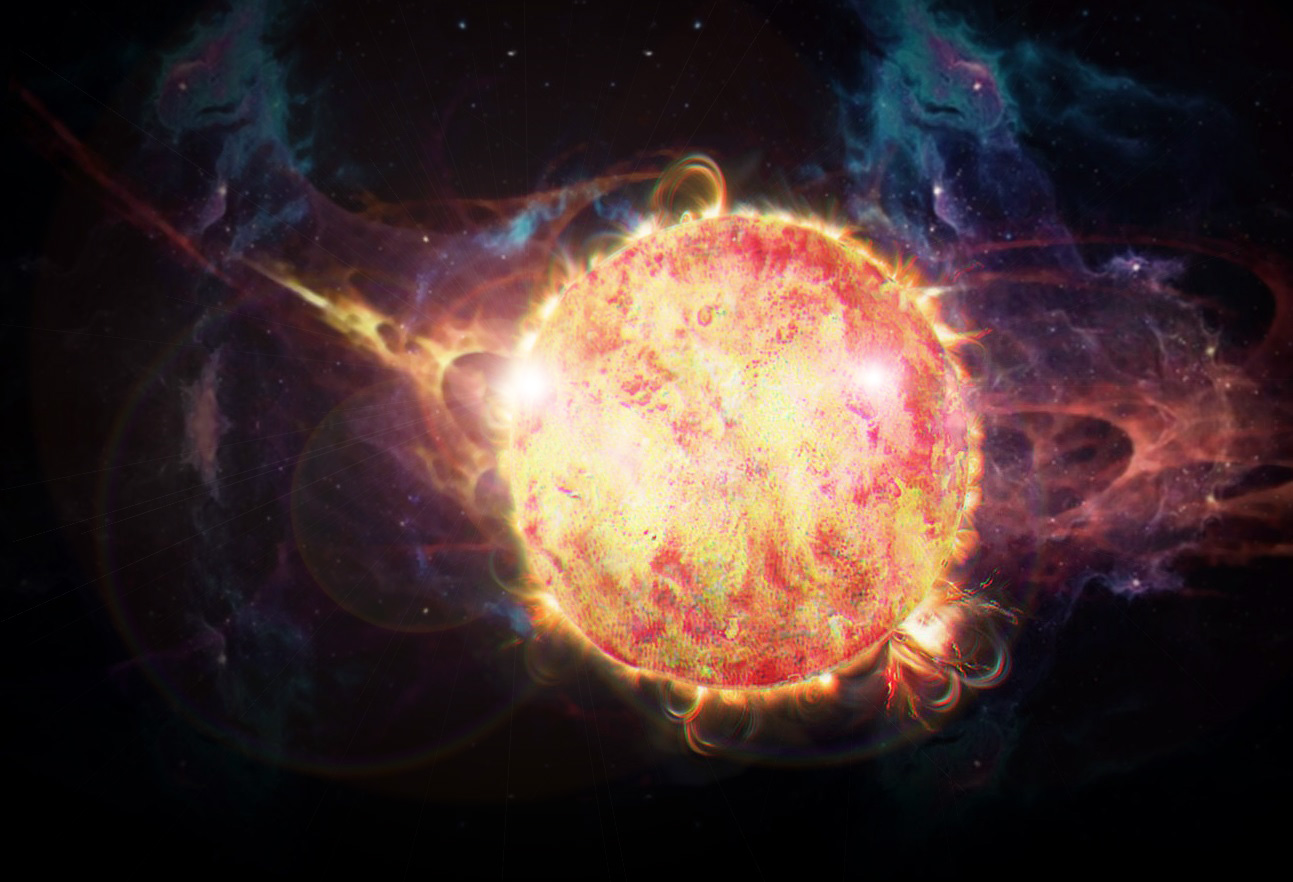
“Awareness is important, almost more so than funding,” he tells me. “Not just raising public awareness, but that of the policymakers and the government.”
The forecasting system he is working on with Trinity colleagues as a lead scientist aims to accurately predict solar storms that impact our everyday lives on Earth through extensive research into the origin of solar storms. The service, Flare Likelihood and Region Eruption Forecasting (FLARECAST), “is of definite interest to the European space weather community by providing accurate predictions of these solar flares,” Bloomfield explains.
Solar flares
Solar storms are caused by huge gas explosions from the sun that have the potential to damage living organisms on Earth and destabilise radio communications and electrical power systems. They travel at the same speed as light, and so to traverse the 93 million miles between Earth and the sun only takes them about eight minutes. The flares release huge amounts of energy – about equal to the energy produced by over 2.7 billion of the largest and most powerful hydrogen bomb, Tsar Bomba, being detonated at the same time.
Bloomfield explains that “solar flares can impact systems such as telecommunications and aviation here on Earth, so naturally there is a lot of interest in when these events occur. While CMEs are generally higher in energy, it can take a day and a half to three days for them to actually reach Earth. However, this isn’t the case with flares.” While solar flares can impact navigation systems and telecommunications here on Earth, it is important to realise that the radiation from these eruptions also pose a serious hazard to astronauts performing spacewalks, or satellites who could be at risk of destruction if they are in just the wrong place at just the wrong time.
Public interest in solar activity and space weather has increased in recent months. For example, the recent exhibition ‘Strange Weather’ run at the Science Gallery in College gave visitors the chance to give a futuristic mock forecast of solar and space weather in the style of an evening news broadcast. Dr. Bloomfield also says that the research has already made an impact on a governmental level. “After a recent meeting involving Dr. Gallagher, myself and other research scientists, the Office of Emergency Planning is considering the potential impacts of adverse solar weather,” he says.
Different approach
There have been attempts at forecasting solar flares before, but Bloomfield explains that this project will be different. “One of the problems [with current forecasting programs] is that there are different time periods in the solar cycle used between research groups,” he says. Different teams carry out their experiments and data collection at different points through the cycle and, as Bloomfield jokingly puts it, “It’s very easy to be right when there’s nothing there”.
One of the advantages of this project is the interconnectivity established between universities in other European nations. The FLARECAST research team comprises of the research scientists at the School of Physics in the Fitzgerald building and SNIAM building in College, but the connectivity of the research extends far beyond Trinity’s walls. The co-ordinator of the project is based in the Academy of Athens in Greece and there are also partners and research scientists in Universita degli Studi di Genova and Consiglio Nazionale delle Recerche in Italy, the Centre National de la Recherche Scientifique and the Universite Paris-Sud in France, the Fachhochschule Nordwestschweiz in Switzerland, and the Met Office in the UK.
There is a tight coupling between the UK and the Trinity research team. “The Met office is relatively new to space weather but highly established in terrestrial weather forecasting,” Bloomfield explains. “They bring a certain pedigree to being able to give forecasts, and we bring the knowledge of the sun and flares.” He tells me that there’s currently a PhD physicist from the School of Physics researching how the solar storms can affect the Irish power network, while working closely with EirGrid
Funding
In relation to the funding the project has recevied, Bloomfield says, “We’re doing really well for the current Irish economic climate. Most funding for these projects has to come from Europe, as space weather research is not really part of the Science Foundation Ireland (SFI) remit. The Irish Research Council can provide funding for PhD students, but not for projects of this scale.” The grant was obtained under Horizon 2020, which is the EU’s €79 billion programme for research and innovation. The Irish support network is currently run by Enterprise Ireland. FLARECAST is in fact the first Horizon 2020 project in Trinity and one of the first in Ireland.
With novel technologies and methods for forecasting the space weather of our 9 billion kilometre wide solar system, who knows what the future of heliophysics and astrophysics holds? It may not be long until Dr. Shaun Bloomfield and the other scientists of FLARECAST allow us to check our flare schedule as easily as checking the tides when going out for a swim in the sea, or figuring out the next DART home on a night out.
If you’d like to stay up to date on everything going on in College’s School of Physics, such as the famous pitch-drop experiment which has been running since October 1944, you can follow them on Twitter – @TCD_physics – or visit their website, www.tcd.ie/Physics.
Illustration: Natalie Duda






